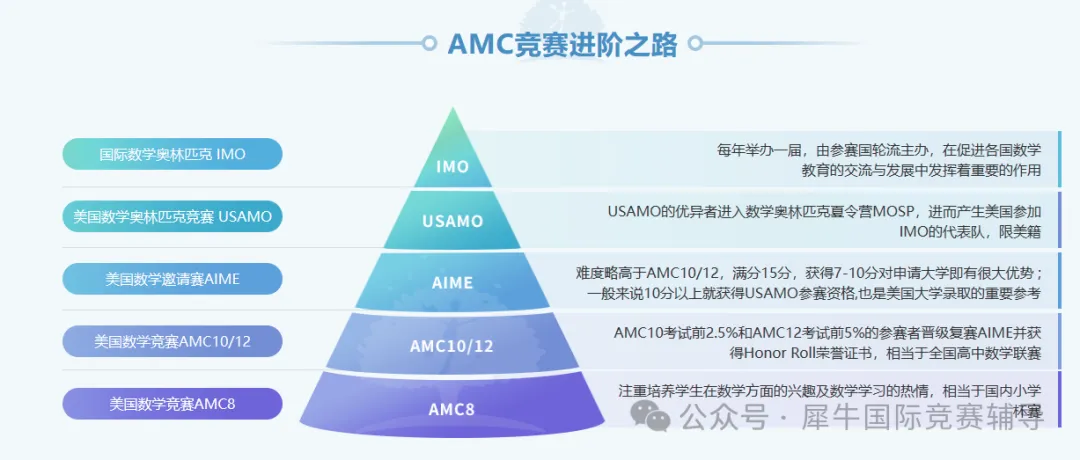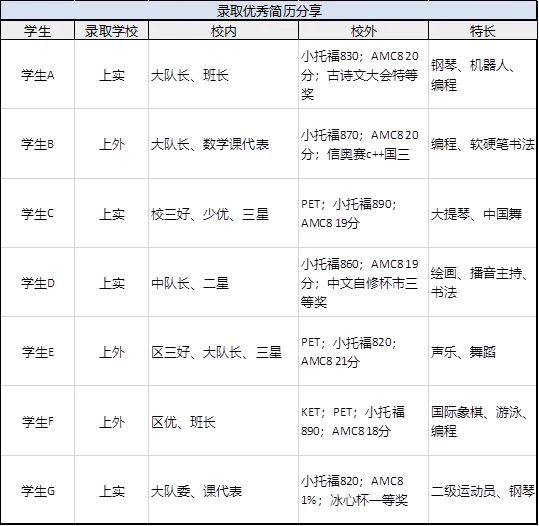2月15日托福考试落下帷幕考情速递也已经出炉了!
题目难度有所升级!考生直呼被难哭~阅读部分压中原题!
同学们觉得这次考得如何?
期待备考同学们都能顺利上岸!
阅读
套 1
1.Early European Tapestries
Tapestries, handwoven textiles made with different colored threads to produce designs or images, were highly popular in western and northern Europe between the thirteenth and seventeenth centuries. The nobility at the time usually lived in big, austere, drafty castles, and tapestries provided comfort and warmth. They could be hung on cold walls or used to cover doors and windows. Noble families often did not have a permanent home, instead moving periodically among several locations. Tapestries, which were expensive, were usually packed and moved each time, bringing with them a sense of luxury and familiarity.
Some of the most famous tapestries were woven from wool in Flanders (modern Belgium), a region well-placed for tapestry production. Many of the plants that supplied dyes grew there. The leaves of the woad plant were used to make blue, and madder root provided red. Yellow came from different materials, including onion skins and lemon peels, though most of these yellows faded quickly, thus also affecting the quality of green, which is a mixture of blue and yellow. High-quality wool was not produced in Flanders but was readily imported from nearby England.
Because of a long history of textile production, Flanders already boasted many skilled weavers and dyers when tapestry production began to increase, and this advantage grew in the late fifteenth century because of unrest in Flanders' southern neighbor, France. Originally, Paris had been a center of tapestry production, but the turmoil produced by the Hundred Years' War between England and France (1337- 1453) caused many textile workers to relocate to Flanders or to the city of Arras, which was then a part of the Duchy of Burgundy. Following the death of the duke of Burgundy in 1477, the French king Louis XI conquered the territories around Arras. Its inhabitants, still loyal to Burgundy, then expelled all the French who had lived in the city. In retaliation, Louis attacked the town and, in turn, expelled the inhabitants loyal to Burgundy, including the textile workers, many of whom fled to Flanders. Paris regained some of its strength in tapestry production in the seventeenth century, when Louis XIV established the famed Gobelins workshops there.
Tapestries were initially used mostly for warmth, but their visual aspect later gained in importance. Tapestries often told a story. Many early tapestries were hung in churches and cathedrals; these often featured biblical scenes and were used for teaching or religious devotion. However, the use of tapestries in churches later declined with the rise of Gothic architecture. Because this new style emphasized light, churches had many more windows than before, reducing the space for tapestries. In homes, tapestries were still prized; they tended to show complex, varied scenes in vivid colors and provided visual unity to rooms. Historical or mythical scenes were popular, including depictions of heroes and heroines from Greek mythology and figures from European legend. Among the most famous tapestries is a set of six called The Lady and the Unicorn, now in the Cluny Museum in Paris. These tapestries, done in the intricate millefleurs design (with a background of many small flowers), all show an elegant lady accompanied by a unicorn and a lion. Five of them likely represented the senses, but the meaning of the sixth, bearing an inscription sometimes translated as“my sole desire," is debatable.
Tapestries were often used as symbols of power and success. A nobleman would sometimes commission a tapestry showing historical or mythical scenes that lent his family legitimacy or commemorating a battle his family had won. Because these tapestry pieces declared status, they were often finer than other kinds of tapestries, sometimes being made with gold or silver thread. One magnificent group of tapestries, called the Apocalypse of Angers, was commissioned by the duke of Anjou (France) in 1375. In Christian narratives, the Apocalypse is the final battle between good and evil, which is symbolized in the tapestry by various images, like battles between angels and beasts. Some of the angels are holding flags showing the Cross of Anjou, a symbol of the duke's territory. The tapestries were t probably designed to represent the duke's wealth as well as to reinforce his authority as a ruler.
2.The Human Appendix
人类的阑尾是一个附着在大肠上的小蠕虫状器官。阑尾炎是一种可能致命的阑尾炎,通常发生在年轻人身上,在1890年之前非常罕见,但在今天却很常见。1871年,查尔斯·达尔文(Charles Darwin)将人类的阑尾与许多动物较大的阑尾进行了比较。根据当时阑尾炎的罕见性,他得出结论认为,人类的阑尾没有功能一一它既不会帮助我们也不会伤害我们。随着人们改变饮食习惯,这是一种残留物(生物体中已失去功能的部分),逐渐枯萎。
在接下来的100年里,阑尾的退化状态几乎没有受到质疑,而阑尾的无用感只会因其造成麻烦的倾向而增强。到20世纪50年代,医学界认为它毫无意义。切除它成为发达国家最常见的外科手术之一。
套 2
1.Origin of the Solar System
我们太阳系的有序性使得大多数天文学家得出结论,行星基本上是在与太阳相同的时间从相同的原始物质中形成的。这些物质形成了一个巨大的尘埃和气体云,称为星云。星云假说认为,太阳系的所有天体都形成于一个巨大的星云云,其中大部分由氢和氨组成,还有一小部分是已知存在的所有其他较重元素。在这层冰冷的尘埃和气体云中,较重物质主要由硅、铝、铁和钙等元素组成,这些物质是当今常见的岩石材料。其他常见元素也很普遍,包括氧气、碳和氮。
The orderly nature of our solar systemleads most astronomers to conclude that the planets formed at essentially the same time and from the same primordial (original) material as the Sun. This material formed a vast cloud of dust and gases called a nebula. The nebular hypothesis suggests that all bodies of the solar systemformed from an enormous nebular cloud consisting mostly of hydrogen and helium as well as a small percent of all the other heavier elements known to exist. The heavier substances in this frigid cloud of dust and gases consisted mostly of such elements as silicon, aluminum, iron, and calcium—the substances of today’s common rocky materials. Also prevalent were other familiar elements, including oxygen, carbon, and nitrogen.
Nearly five billion years ago, some external influence, such as a shock wave traveling from a catastrophic explosion (supernova), may have triggered the collapse of this huge cloud of gases and minute grains of heavier elements, causing the cloud to begin to slowly contract due to the gravitational interactions among its particles. As this slowly spiraling nebula contracted, it rotated faster and faster for the same reason ice-skaters do when they draw their arms toward their bodies. Eventually, the inward pull of gravity came into balance with the outward force caused by the rotational motion of the nebula. By this time the once vast cloud had assumed a flat disk shape with a large concentration of material at its center, called the protosun (pre-Sun). Astronomers are fairly confident that the nebular cloud formed a disk because similar structures have been detected around other stars.
During the collapse, gravitational energy was converted to thermal energy (heat), causing the temperature of the inner portion of the nebula to dramatically rise. At such high temperatures, the dust grains broke up into molecules and energized atomic particles. However, at distances beyond the orbit of Mars, the temperatures probable remained quite low. At -200̶C, the tiny particles in the outer portion of the nebula were likely covered with a thick layer of ices made of frozen water, carbon dioxide, ammonia, and methane. Some of this material still resides in the outermost reaches of the solar systemin a region called the Oort cloud.
The formation of the Sun marked the end of the period of contraction and thus the end of gravitational heating. Temperatures in the region where the inner planets now reside began to decline. The decrease in temperature caused those substances with high melting points to condense into tiny particles that began to coalesce (join together). Such materials as iron and nickel and the elements of which the rock-forming minerals are composed—silicon, calcium, sodium, and so forth—formed metallic and rocky clumps that orbited the Sun. Repeated collisions caused these masses to coalesce into larger asteroid-size bodies, called protoplanets, which in a few tens of millions of years accumulated into the four inner planets we call Mercury, Venus, Earth, and Mars. Not all of these clumps of matter were incorporated into the protoplanets. Rocky and metallic pieces that still remain in orbit are called meteoroids.
As more and more material was swept up by the inner planets, the high-velocity impact of nebular debris caused the temperatures of these bodies to rise. Because of their relatively high temperatures and weak gravitational fields, the inner planets were unable to accumulate much of the lighter components of the nebular cloud. The lightest of these, hydrogen and helium, were eventually whisked from the inner solar systemby the solar winds.
At the same time that the inner planets were forming, the larger, outer planets (Jupiter, Saturn, Uranus, and Neptune), along with their extensive satellite systems, were also developing. Because of low temperatures far from the Sun, the material from which these planets formed contained a high percentage of ices—water, carbon dioxide, ammonia, and methane—as well as rocky and metallic debris. The accumulation of ices partly accounts for the large sizes and low densities of the outer planets. The two most massive planets, Jupiter and Saturn, had surface gravities sufficient to attract and hold large quantities of even the lightest elements—hydrogen and helium.
2.Roots of the Western Sudanic Empires
有证据表明,在苏丹西部的萨赫勒地区存在早期城市化的形式,萨赫勒是横跨非洲的一个气候过渡带,北起撒哈拉沙漠,南至苏丹草原(草地)。该地区存在国家的最早记载出现在公元8世纪的阿拉伯文献中。到公元11世纪,遥远的北非的阿拉伯人和柏柏尔人已经知道瓦加杜帝国及其富有而强大的统治者加纳。瓦加杜王国之后是更大的马里帝国,再后来是桑海帝国。
Evidence exists of early forms of urbanization in Western Sudan along the Sahel, a climatically transitional band stretching across Africa between the Sahara Desert to the north and the Sudanian savanna (grasslands) to the south. The first accounts of the existence of states in this region appear in Arab writings of the eighth century AD. By the eleventh century AD, Arabs and Berbers of faraway North Africa knew of the Wagadu Empire and its wealthy and powerful ruler called the ghana. The Wagadu kingdom was followed by the larger empire of Mali, and later still by the empire of Songhai.
The broad flat expanse of the Western Sudan enables the placid Niger River to meander in its sweeping arc from west to east, making the river ideally suited to human navigation. This topography has also allowed for the easy movement of peoples, languages, animals, crops, arts, and ideas. The dramatic diversity of temperature and climate that separates broad strips of territory has encouraged economic specialization within each region. Pastoralists (animal herders) living on the edge of the desert in the Sahelian city of Timbuktu are only 200 kilometers north of the fertile floodplain of the Niger River. Farmers on the savanna below the Niger are in turn only a few hundred kilometers from the edge of the great equatorial rain forest. Throughout the long history of the Western Sudan, the proximity of these disparate zones has made trade crucial to the prosperity of settled communities. Protein-deficient farmers of the savanna needed meat from their pastoral neighbors and salt from desert nomads. Nomadic herders of the Sahel needed the cereals produced by the farmers and exchanged them for the meat and hides of their livestock. Forest dwellers traded meat and skins from the animals they hunted, as well as foodstuffs from forest crops. Fishermen of the Niger sent their protein-rich catches in all directions. This regional interdependence encouraged commerce, economic specialization, and in strategiclocations, the creation of towns, cities, and states (societies with centralized political authority, a ruling class, and urban centers). These trading relationships were forged centuries before Arab writers ever heard of the wealth of the ghana.
However, until recent times most scholars attributed the rise of Sudanicstates to the introduction of the camel into the Sahara around the fourth century AD. Camels brought the first Arab travelers to the previously unknown empires of the Sudan, thereby providing historians with the earliest written evidence of their existence. Armed with these documents, they assumed that the cities of the Sudan had emerged in response to the needs of Arab and Berber desert traders. Before the appearance of the rare and exotic goods supplied by the trade, scholars reasoned, rulers lacked the leverage they needed to elevate themselves in the eyes of their followers. Such an interpretation argued against common sense, as it is unlikely that merchants would chance the arduous trip across the desert if there were no urban markets to attract them, but it was supported by the few written sources available, all of which were produced by literate outsiders who traveled into the region after the advent of camel commerce.
Recent archaeological excavations have revealed that the Western Sudan had thriving urban centers before the first camels made their way across the desert. Indeed, at Jenne on the Middle Niger, archaeologists have uncovered a sprawling urban settlement that lacks the monumental architecture, elaborate tombs, and memorials to powerful individuals that are associated with contemporary Near Eastern and Nile Valley remains. Instead, the settlement pattern suggests a diffusion of political power and a remarkable degree of social and economic equality. Although some archaeologists question whether or not such settlements constitute true urbanization, others see in Jenne a remarkable example of social complexification without state-sponsored coercion.
Although there can be no doubt that complex societies emerged in the Western Sudan before the advent of camel-borne commerce, the integration of the camel into the trans-Saharan caravan trade stimulated political expansion in the region. The quickening pace of economic activity spurred urbanization and encouraged economic specialization, which in turn demanded greater political authority to safeguard the merchants and the indigenous elite who participated in the trade. Merchants at both the northern and southern markets required security, without which commerce could not continue, let alone flourish.
套 3
1.TheCarboniferous Atmosphere
大约5.3亿年前,出现了大量新的动物形态,从那个时代开始,大气中的氧气迅速增加。随着氧气水平的上升,新的生态系统不断发展壮大,直到形成了茂密的沼泽森林。因此,开始了石炭纪(大约3.6亿至3亿年前),以深层的煤层命名,煤层是由树木和其他有机物质的遗骸在这一时期形成的碳的一种形式。由于煤层(煤层)中发现了许多化石,我们对石炭纪世界的生命有了很多了解。1979年,在英国博尔索弗镇工作的矿工偶然发现了一只巨大蜻蜓的化石,翼展超过半米石炭纪的蝎子有一米长,蜉蝣的翼展有40厘米2植物非常巨大。
2. Opera in Seventeenth Century Venice
歌剧,一种由音乐和声乐表演组成的戏剧形式,由管弦乐队伴奏,起源于16世纪末的意大利。在17世纪初,歌剧在宫廷(贵族统治者的住所)表演,面向一小群精英观众,由作曲家和诗人创作,他们实际上是宫廷的仆人。这些早期的歌剧用于庆祝各种事件--婚礼、出生、军事胜利--通常是为了展示宫廷的财富。然而,不久之后,歌剧开始吸引更广泛的观众。从私人剧院到公共剧院的转变在作曲家克劳迪奥,蒙特威尔第的职业生涯中得到了清晰的体现。在曼图亚宫廷任职期间,蒙特威尔第于1607年创作了第一部歌剧《奥菲欧》。这部歌剧利用了曼图亚宫廷丰富的器乐资源,在音乐和戏剧表现力方面前所未有,足以给宫廷的政治对手留下深刻印象。1613年,蒙特威尔第离开曼图亚宫廷,搬到了威尼斯,在圣教堂担任职位。马可大教堂。虽然他的大部分时间都花在写教堂音乐上,但随着时间的推移,他获得了创作世俗音乐的自由,包括歌剧。
套 4
1.Jazz
爵士乐,一种源自美国的艺术形式,起源于20世纪之交的美国南部城市新奥尔良。它结合了各种音乐风格的元素,包括拉格泰姆、民歌、宗教圣歌、蓝调和摇摆乐,成为一种在商业和艺术上都很成功的音乐类型。新奥尔良是一个独特的城市原因很多。这座城市位于密西西比河下游,是一个主要港口城市,提供了大量的商业和贸易。在全国范围内和国际上。人口多样化,少数自人公民掌权,而大多数白人公民和所有黑人公民都处于社会和经济阶梯的较低端。在新奥尔良还有一类独特的混血儿,被称为克里奥尔人,他们非常自豪自己的法国血统。克里奥尔人负责社区的娱乐区,这个区域今天仍然被称为法国区。酒吧夜总会和其他娱乐场所是克里奥尔人区常见的商业活动。商人、商人和游客被法国区的夜生活所吸引,就像今天游客被吸引一样。
2. Damsand Flood Control
在河流上建造水坝既有优点也有缺点。方面,水坝对人类有益。它们提供了淡水储备,这是一种对生命至关重要的商品既可以直接作为饮用水,也可以间接通过灌溉农田提供食物。此外,流经水坝的水的能量可以被利用来发电。水坝建在河流上还可以控制洪水。因此,水坝可以提供保护,免受当地极端气候的影响。上游地区的大雨本来可能会导致下游洪水,但在大坝后面的水库(储水区域)中被拦蓄。同样,在干旱时期,本来可能会导致干早,但水库中的水可以释放到下游地区。
听力
C 1
莎拉感谢前教授在大一时给予的建议,尤其是关于如何积极参与课堂的建议。她提到自己现在仍会坐在前排以提高参与感。教授分享了研究发现,前排学生更活跃。莎拉提到自己是电影专业,计划制作一部关于学生成功和动机的短片,希望传递学习建议。她邀请教授参与并提供建议。教授同意提供内容建议,但因镜头紧张,只愿意录制音频作为旁白。两人决定合作完成这部短片。
L 1
在艺术的漫长历史中,20世纪无疑是一个充满变革与突破的时期。这一时期涌现出了许多具有深远影响的艺术流派和形式,其中达达主义(Dadaism)和TN艺术便是极具代表性的两种。达达主义以其非传统的艺术理念和实践,对传统艺术的审美标准发起了挑战。它强调艺术的反叛性,拒绝遵循既定的规则和形式,试图通过一种看似无意义的表达方式来揭示社会的荒诞与矛盾。这种艺术形式的出现,为后来的现代艺术发展开辟了新的道路。
C 2
马克与考古学教授讨论了暑期考古经历,教授肯定了实地研究的重要性。马克提到论文初稿截止日期的误解,教授解释是课程大纲写错,并提醒注意时间。教授还指出马克的初稿介绍部分过于冗长,建议精简,聚焦研究问题,遵循学术结构。马克表示会按时完成论文,以暑期发掘为研究基础。教授鼓励他,并给出建设性修改建议。
L 2
在考古学的广阔领域中,人类的迁徙一直是科学家们探索的重要课题之一。尤其是关于人类是如何从亚洲迁徙到美洲的问题,一直是考古学家们关注的焦点。传统的观点认为,人类是通过一条经过S地区的路线迁徙到美洲的。然而,随着考古学研究的不断深入,新的证据和观点不断涌现,挑战着我们对这一历史事件的传统认知。
L 3
在物理学的众多研究领域中,核聚变和核裂变一直是备受关注的课题。核聚变作为一种潜在的清洁能源技术,被认为具有巨大的发展前景。与核裂变相比,核聚变不会产生核废料,也不会对环境造成污染,同时能够产生大量的能量。然而,尽管核聚变技术在理论上具有诸多优势,但在实际应用中却面临着诸多挑战。
口语
TASK 1独立口语题
Task 1(3套)
A:Do you agree or disagree with the following statement? Taking too many photographs affects people's participation in events and activities.
B:Do you agree or disagree with the following statement? Schools should not allow young children to use calculators during maths classes and exams.
C:Do you agree or disagree with the following statement? The best way to teach children how to behave is to praise their good behavior rather than to criticize their bad behavior. Use details and examples to support your opinion.
TASK 2校园题
Task 2(2套)
AA student suggests converting the dormitory rooms, originally designed for three people, into rooms for two.
The speaker disagrees. Since most students spend their time in classrooms, libraries, or other activity areas, the main purpose of the dormitory is to rest and sleep. In this case, while converting a room for three people into one for two may seem like it increases available space for each student, it would not significantly improve the efficiency of dorm usage. Instead, this change could lead to resource waste, because even with fewer people in the room, students’ time spent in the dormitory would not increase significantly.
BA student suggests implementing an online reservation system, allowing students to book study rooms in advance, with a time limit of 2 hours per booking.
The speaker disagrees.First, she thinks the system would be too complicated, and many people might forget to reserve a room in advance, while in fact, there is usually a free spot when they go to the study room.Second, she points out that 2 hours is far too short for preparing for big exams, which typically require at least 4 hours for proper study.
TASK 3学术讲座题
Task 3(2套)
A: Vertical migration is a common behavior pattern in marine animals. It typically involves animals staying in deeper water layers during the day to rest and moving to the surface waters at night to feed. This behavior is usually related to changes in light and predator avoidance. Many plankton and small fish engage in this daily vertical migration to make the most of the resources in different water layers and reduce the risk of being preyed upon.
B:Constrained risk受限风险
TASK 4 学术讲座题
Task 4(2套)
A:
The professor explains two marketing strategies a small business with a limited budget can use:
1. Narrowing the advertising scope and targeting the right audience
Example: A music store can place ads in social media sections or forums related to music, effectively reaching its target audience at the lowest cost.
2. Collaboration
Example: The music store can collaborate with local music schools for joint promotional activities, helping each business attract customers. This partnership effectively expands influence and saves resources.
B:
Soft-shelled eggs are a special type of egg with a soft and highly permeable shell. This structure helps maintain moisture inside the egg, providing a suitable environment for embryo development.
Examples:
Frogs: Frog eggs are usually encased in a gelatinous substance, and they lack a hard shell. Instead, they are protected by a soft membrane, which helps keep the eggs moist in water and facilitates necessary oxygen and water exchange for the developing embryos.
Snakes: Many snake species, such as those from the racer snakes and water snakes family, lay soft-shelled eggs. Their shells are soft and elastic, able to adapt to different environmental conditions while maintaining moisture inside the egg to ensure proper embryo development.
写作
综合写作
The transition from cottage production to factory-based manufacturing marked a significant shift in industrial history. The reading presents three primary reasons for this transformation: the introduction of new technology, strengthened property rights protection, and reduced transportation costs. However, the listening challenges these assertions, offering counterpoints.
First, the reading emphasizes that the emergence of new, large, and complex machines played a crucial role in the shift towards factory production. These advanced machines were deemed suitable only for factory settings due to their intricate nature. Conversely, the listening rebuts this claim by highlighting that the assembly of new machinery is not overly complicated. Furthermore, examples such as steam engines existed before the application of these technologies. Such machines were not exclusive to factories, as cottage industries could also utilize them effectively. Therefore, the applicability of new technology alone does not serve as the decisive factor in the transition from cottage production to factories.
Second, according to the reading, the reinforcement of property rights protection through legislation made factory production more appealing. The ability of factories to safeguard their assets and production materials was seen as a driver for this shift. However, the listening refutes this point by noting that the enhancement of private asset protection was not unique to Britain. Other regions, like the Netherlands, also bolstered property rights protection without undergoing the transition from cottage industries to factory production. Therefore, merely strengthening property rights does not provide sufficient support for establishing factories.
The reading posits that factory production could lower transportation expenses by concentrating production activities. Shorter distances for transporting raw materials and finished goods were believed to reduce costs significantly. In contrast, the listening argues that while transportation costs might decrease, factory production models introduce additional expenses such as construction costs and the hiring of supervisors. This uncertainty surrounding total costs implies that the reduction in transportation costs alone may not be a pivotal factor driving the transition in production methods.
学术讨论
Doctor Gupta:
Today, we're discussing whether there should be a specific age to mark adulthood. Traditionally, 18 years old is considered the transition to adulthood in many cultures, but some argue that 18-year-olds are not mature enough to take on adult responsibilities and duties. Others suggest that 21 might be a more appropriate age, while some believe adulthood should not be defined by age at all. Should there be a specific age for adulthood, or should it be based on individual maturity and circumstances?
Claire
I believe 21 years old should be the mark of adulthood. Most 18-year-olds are still in school and rely heavily on their parents for financial and emotional support. At 18, many young people are just beginning to explore their independence and may not have the life experience or maturity to handle adult responsibilities. By 21 years old, however, individuals are more likely to have completed their education, gained some work experience, and developed the skills needed to navigate adulthood.
Andrew
I don't think adulthood should be defined by a specific age. Maturity and responsibility vary greatly from person to person, and some individuals are capable of handling adult duties at a much younger age. For example, in many cultures, young people take on family responsibilities, such as caring for siblings or contributing to household income, long before they turn 18. Defining adulthood by age ignores these differences and overlooks the fact life experiences, not just age, shaping a person's readiness for adulthood.














